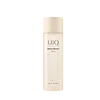What's inside
What's inside
 Key Ingredients
Key Ingredients

 Benefits
Benefits

 Concerns
Concerns

No concerns
 Ingredients Side-by-side
Ingredients Side-by-side

Water
Skin ConditioningButylene Glycol
HumectantGlycerin
HumectantPentylene Glycol
Skin ConditioningPropanediol
SolventChondrus Crispus Extract
Skin ConditioningSaccharum Officinarum Extract
MoisturisingSea Water
Humectant1,2-Hexanediol
Skin ConditioningProtease
ExfoliatingBetaine
HumectantPanthenol
Skin ConditioningEthylhexylglycerin
Skin ConditioningAllantoin
Skin ConditioningXanthan Gum
EmulsifyingDisodium EDTA
Water
Skin ConditioningCutibacterium Avidum/Granulosum Ferment Extract Filtrate 24.4%
EmollientButylene Glycol
HumectantDipropylene Glycol
Humectant1,2-Hexanediol
Skin ConditioningNiacinamide
SmoothingCentella Asiatica Extract
CleansingUrea
BufferingLactic Acid
BufferingFicus Carica Fruit Extract
HumectantSucrose
HumectantUlmus Davidiana Root Extract
Skin ConditioningRubus Chamaemorus Seed Extract
Skin ConditioningHydrogenated Lecithin
EmulsifyingCeramide NP
Skin ConditioningXanthan Gum
EmulsifyingCitric Acid
BufferingFructan
Skin ConditioningProtease
ExfoliatingSodium Citrate
BufferingHydroxyacetophenone
AntioxidantEthylhexylglycerin
Skin ConditioningWater, Cutibacterium Avidum/Granulosum Ferment Extract Filtrate 24.4%, Butylene Glycol, Dipropylene Glycol, 1,2-Hexanediol, Niacinamide, Centella Asiatica Extract, Urea, Lactic Acid, Ficus Carica Fruit Extract, Sucrose, Ulmus Davidiana Root Extract, Rubus Chamaemorus Seed Extract, Hydrogenated Lecithin, Ceramide NP, Xanthan Gum, Citric Acid, Fructan, Protease, Sodium Citrate, Hydroxyacetophenone, Ethylhexylglycerin
 Reviews
Reviews

Ingredients Explained
These ingredients are found in both products.
Ingredients higher up in an ingredient list are typically present in a larger amount.
1,2-Hexanediol is a synthetic liquid and another multi-functional powerhouse.
It is a:
- Humectant, drawing moisture into the skin
- Emollient, helping to soften skin
- Solvent, dispersing and stabilizing formulas
- Preservative booster, enhancing the antimicrobial activity of other preservatives
Butylene Glycol (or BG) is used within cosmetic products for a few different reasons:
Overall, Butylene Glycol is a safe and well-rounded ingredient that works well with other ingredients.
Though this ingredient works well with most skin types, some people with sensitive skin may experience a reaction such as allergic rashes, closed comedones, or itchiness.
Learn more about Butylene GlycolEthylhexylglycerin (we can't pronounce this either) is commonly used as a preservative and skin softener. It is derived from glyceryl.
You might see Ethylhexylglycerin often paired with other preservatives such as phenoxyethanol. Ethylhexylglycerin has been found to increase the effectiveness of these other preservatives.
These enzymes break down protein into smaller peptides and amino acids. They also encourage the formation of new protein.
Our skin uses peptides, amino acids, and protein for maintaining healthy skin cells.
Protease work by breaking peptide bonds in protein with hydrolysis. This is the process of breaking bonds using water.
An in-vitro study (not done on a living organism) found a blend of 3-protease decreases skin inflammation by mitigating the effects of other proteins.
One manufacturer that uses subtilisin, a protease from Bacillus subtilis, claims this ingredient is exfoliating, promotes cell regeneration, and is a good substitute for AHAs. Further research is needed to back up these claims.
Fun fact: The human body contains ~641 protease genes.
Learn more about ProteaseWater. It's the most common cosmetic ingredient of all. You'll usually see it at the top of ingredient lists, meaning that it makes up the largest part of the product.
So why is it so popular? Water most often acts as a solvent - this means that it helps dissolve other ingredients into the formulation.
You'll also recognize water as that liquid we all need to stay alive. If you see this, drink a glass of water. Stay hydrated!
Learn more about WaterXanthan gum is used as a stabilizer and thickener within cosmetic products. It helps give products a sticky, thick feeling - preventing them from being too runny.
On the technical side of things, xanthan gum is a polysaccharide - a combination consisting of multiple sugar molecules bonded together.
Xanthan gum is a pretty common and great ingredient. It is a natural, non-toxic, non-irritating ingredient that is also commonly used in food products.
Learn more about Xanthan Gum